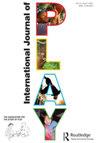幼鼠的游戏:不同的模式及其进化和社会认知意义
IF 1.2
Q3 EDUCATION & EDUCATIONAL RESEARCH
引用次数: 2
摘要
即使有证据表明所有脊椎动物都有玩耍的起源,但对游戏进化的描述却令人惊讶地参差不齐。为了弥补这一差距,必须对游戏进行比较研究,并从关键的系统发育位置纳入分类群。这项研究是第一次系统地描述大羚羊的游戏,因此也是第一次对任何古印度鸟类进行这样的报道。古长龙代表了现代鸟类的一个主要亚群,它们从它们的直系祖先——非鸟类恐龙那里保留了许多祖先的特征,这使它们成为研究最早鸟类行为的理想窗口。我们记录了一组圈养美洲豹的游戏行为,重点关注它们的游戏模式和个体发育。青少年主要从事传染性运动游戏,在大多数游戏回合中增加了社交成分。像摔跤这样的互动式社交游戏只在孩子10.5周大的时候出现,而且通常很少出现。根据我们的发现,我们假设早期的鸟类,也可能是副鸟恐龙,以类似的方式发挥着明显的社会性成分。这些假设需要通过对不同种类的古生代鸟类进行更多的研究来扩展。本文章由计算机程序翻译,如有差异,请以英文原文为准。
Play in juvenile greater rheas: different modes and their evolutionary and socio-cognitive implications
ABSTRACT Even if there is evidence of play from all vertebrate classes suggesting origins in deep time, descriptions of the evolution of play are surprisingly patchy. To bridge this gap, one must study play comparatively and include taxa from key phylogenetic positions. This study is the first systematic description of play in greater rheas, and thereby the first such report on any palaeognath bird. Palaeognaths represent a major subgroup of modern-day birds that have retained many ancestral features from their direct ancestors, the non-avian dinosaurs, making them an ideal window into the behaviors of the earliest birds. We recorded play behaviors of a group of captive rheas, with a focus on the modes and ontogenetic development of their play. Juveniles predominantly engaged in contagious locomotor play, adding a social component to the majority of their play bouts. Interactive social play such as wrestling appeared only around the age of 10.5 weeks and was generally rarer. Based on our findings we hypothesize that early birds, and likely also paravian dinosaurs, played in a similar fashion with a noticeable component of sociality. These hypotheses need to be expanded through more studies on different species of palaeognath birds.
求助全文
通过发布文献求助,成功后即可免费获取论文全文。
去求助
来源期刊

International Journal of Play
Social Sciences-Cultural Studies
CiteScore
1.90
自引率
20.00%
发文量
60
期刊介绍:
The International Journal of Play is an inter-disciplinary publication focusing on all facets of play. It aims to provide an international forum for mono- and multi-disciplinary papers and scholarly debate on all aspects of play theory, policy and practice from across the globe and across the lifespan, and in all kinds of cultural settings, institutions and communities. The journal will be of interest to anthropologists, educationalists, folklorists, historians, linguists, philosophers, playworkers, psychologists, sociologists, therapists and zoologists.
 求助内容:
求助内容: 应助结果提醒方式:
应助结果提醒方式:


